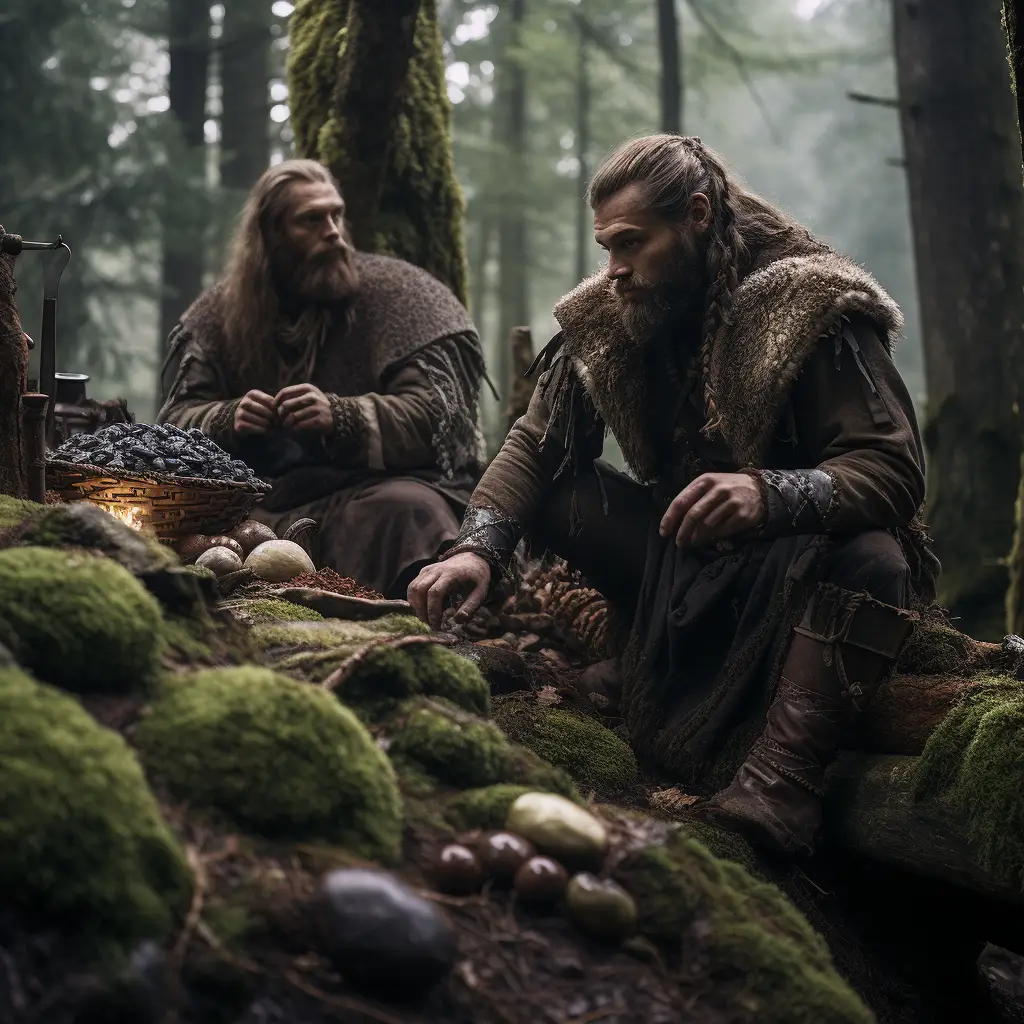Vikings also foraged for wild plants and herbs. They gathered berries, nuts, and other edible plants from the surrounding forests to supplement their diet. This increased their food sources.
Foraging was a huge part of Viking life, especially during times when agriculture faced challenges or when additional food sources were needed. Vikings gathered a variety of wild plants, fruits, nuts, and herbs from their natural surroundings.
Wild Berries: Vikings collected wild berries, such as lingonberries, bilberries, and cloudberries. These berries were not only a source of nutrition but were also used to make jams and preserves.
Nuts: Foraging for nuts, like hazelnuts and walnuts, provided Vikings with an additional source of protein and healthy fats. Nuts were often consumed as a snack or added to meals.
Edible Plants: Vikings foraged for a variety of edible plants and greens. This included wild herbs, leafy greens, and other plants that could be used in salads, stews, or as flavourings for their meals.
Mushrooms: Vikings gathered wild mushrooms, taking care to identify and harvest edible varieties. Mushrooms were used in cooking and could be dried for preservation.
Seaweed: In coastal areas, Vikings foraged for seaweed, which was a nutritious addition to their diet. Seaweed provided vitamins and minerals and could be used in cooking or eaten raw.
Honey: Vikings sought wild beehives to collect honey. Honey served as a sweetener for various foods and beverages, including mead, a fermented honey drink.
Game Hunting: While not traditional foraging, hunting wild game was another means of obtaining food. Vikings pursued animals like deer, elk, boar, and birds for their meat and hides.
Medicinal Plants: Vikings had knowledge of medicinal plants and herbs that could be foraged for various health purposes. These plants were used in traditional remedies and treatments.
Natural Dyes: Some foraged plants were utilized for their colouring properties. Vikings used certain plants to create natural dyes for textiles, allowing them to add colour to their clothing.
Foraging was not only a practical means of the Viking diet, but also a skill deeply ingrained in their culture. It required a good understanding of the environment, knowledge of plant life, and the ability to identify edible and medicinal species. The practice of foraging showcased the Vikings resourcefulness and adaptability in utilizing the diverse natural resources available to them.
We think this is food for thought!

